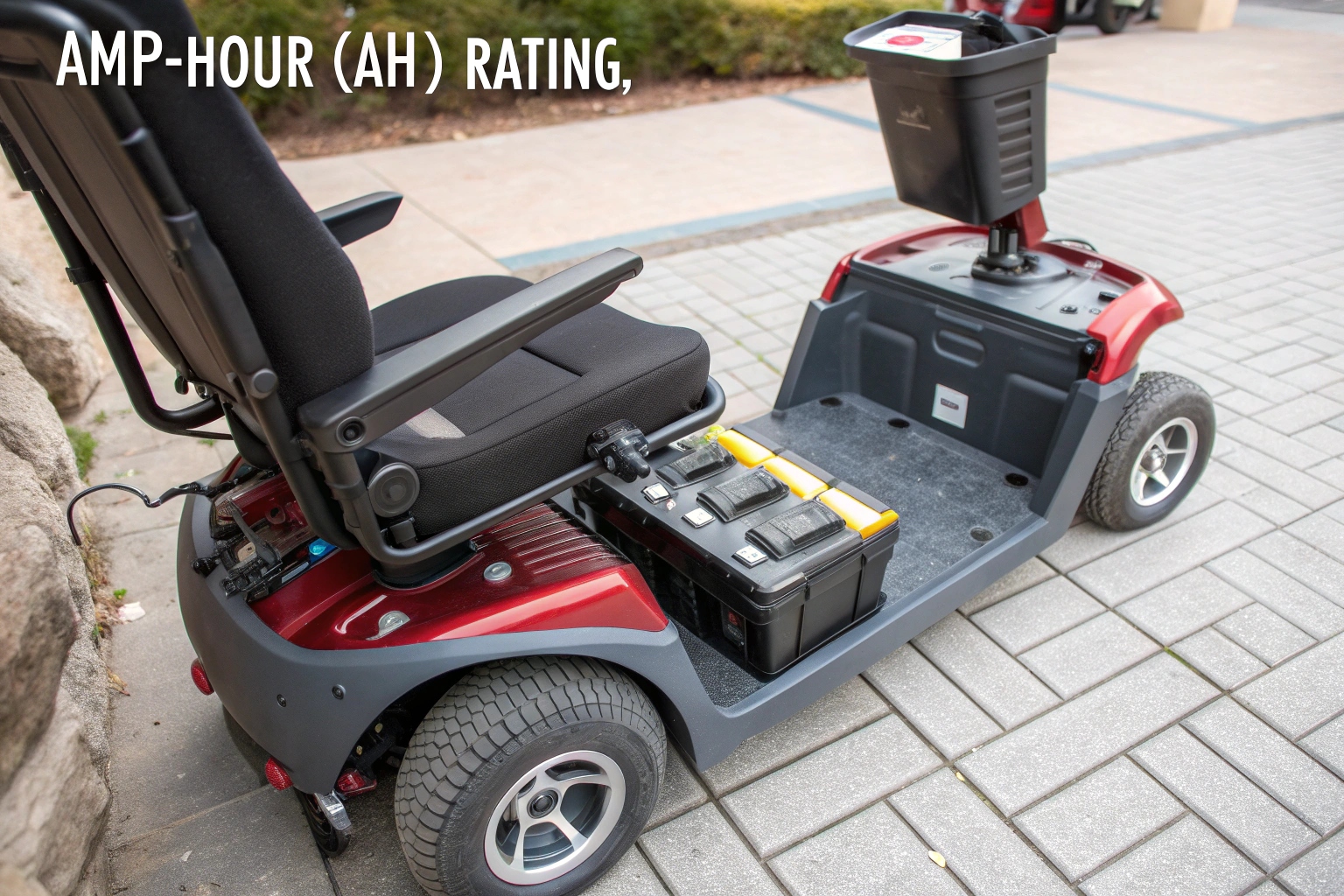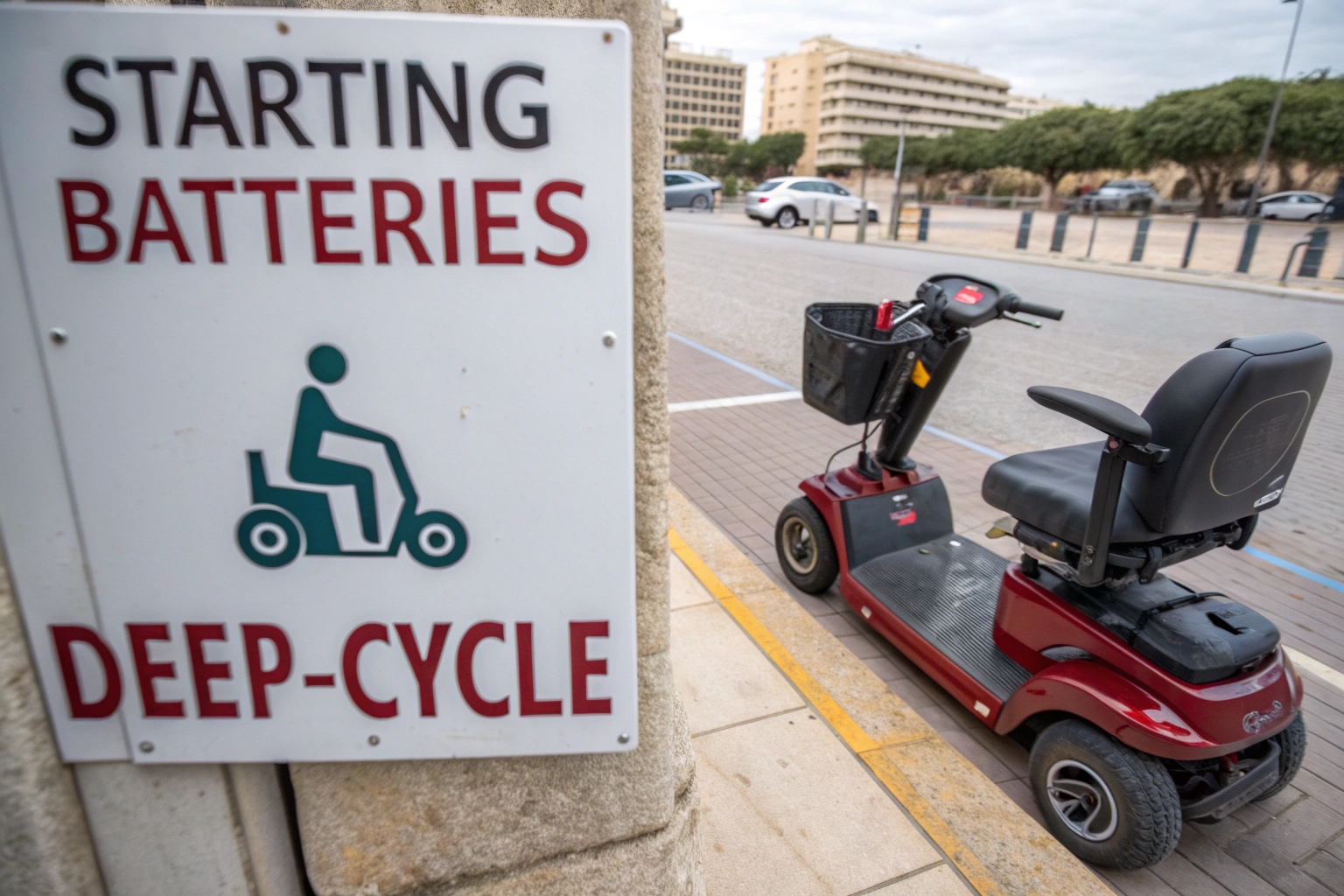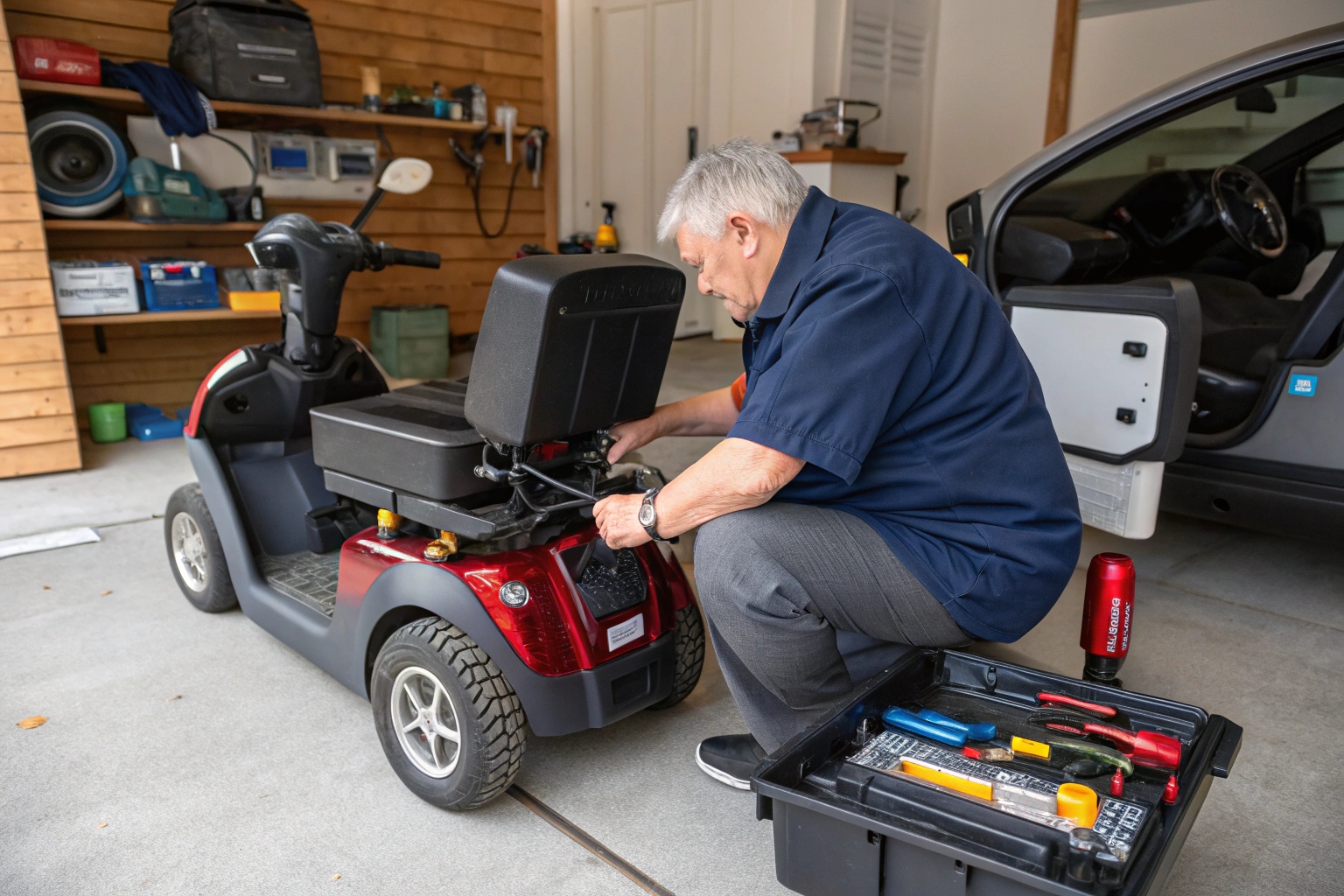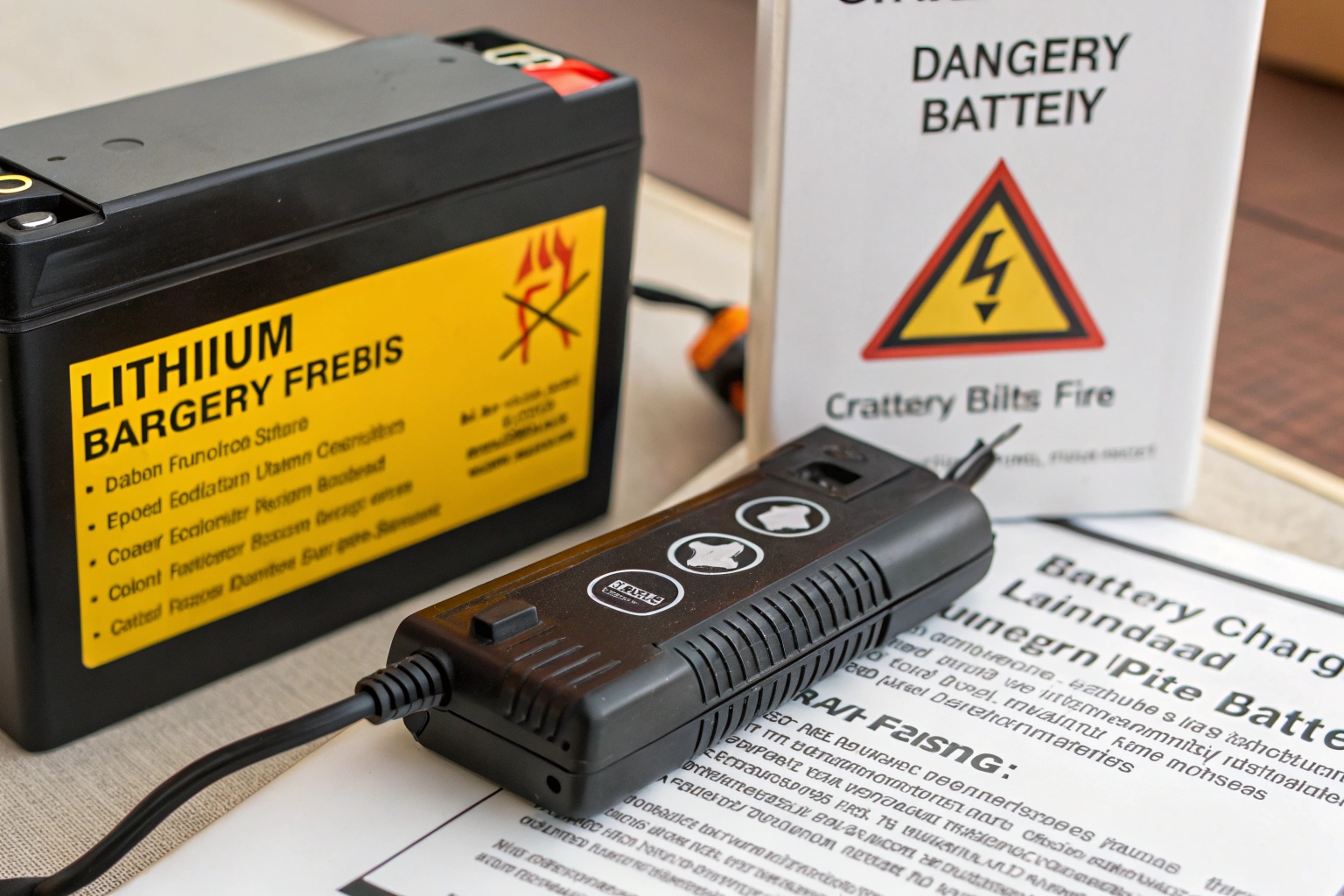Your customers always ask the same question: "Can it go further?" Offering a battery upgrade seems like a great way to increase sales, but you worry that it could lead to damaged scooters or unhappy clients.
Yes, you can upgrade for more range by using batteries with a higher Amp-hour (Ah) rating, as long as they fit. You cannot safely increase power by changing the voltage without also replacing the scooter's motor and controller, which is a major, expensive modification.

This is one of the most common tech support questions my team gets from the importers we work with. The desire for more range is universal. While it is possible to give customers what they want, it has to be done correctly. As a manufacturer, our main goal is to build reliable, safe vehicles. A bad battery upgrade can compromise both of those things. Let's walk through the right way to think about this so you can offer solutions that help your customers and your business.
Can a larger battery damage your mobility scooter?
You have a bigger battery that physically fits inside the scooter. It seems like an easy upgrade, but you hesitate. One wrong move could destroy the expensive electronics inside the scooter.
A battery with a higher kapasite (more Amp-hours) will NOT damage your scooter. A battery with a higher voltage will almost certainly cause serious damage to the controller and motor.

This is the single most important rule in battery upgrades. You must understand the difference between capacity and voltage. They are not the same thing. Think of it like water in a pipe.
- Voltage (V): This is the pressure of the electricity. Most mobility scooters are designed to run on a very specific pressure: 24 volts (made by connecting two 12V batteries). The scooter's electronic controller is the brain, and it's built to handle exactly 24V.
- Capacity (Ah): This is the amount of electricity, like the size of the water tank. A 50Ah battery holds more fuel than a 35Ah battery. It allows the scooter to run for a longer time, giving it more range.
Sending 36V or 48V into a 24V system is like hooking a fire hydrant up to a garden hose. The extreme pressure will instantly overwhelm the system. It will burn out the controller, can damage the motor, and may even affect the wiring and charging port. An upgrade in capacity is safe. An upgrade in voltage is not an upgrade; it is a mistake.
| Upgrade Type | Effect on Scooter | Emniyet |
|---|---|---|
| Higher Capacity (Ah) | Increases travel range. The scooter runs for longer. | Safe |
| Higher Voltage (V) | Overloads and burns out the controller and motor. | Unsafe |
What are the risks of using car or motorcycle batteries?
Car batteries look similar and are often cheaper and easier to find. It could be a tempting way to save money on a replacement. But this is a shortcut that always leads to problems.
Do not use car or motorcycle batteries in a mobility scooter. They are "starting" batteries designed for a huge, short burst of power. A scooter needs a "deep-cycle" battery that provides steady power over many hours.

I have seen distributors try this to lower their costs, and it always ends with customer complaints and failed products. The batteries look similar on the outside, but their internal chemistry and construction are completely different. A battery is not just a battery; it is designed for a specific job.
Here is why a car battery is the wrong tool for the job:
- Design Purpose: Car batteries (also called SLI batteries for Starting, Lighting, Ignition) are made to deliver over 200 amps for about 3-5 seconds to start an engine. They are then immediately recharged by the car's alternator. They are a sprinter.
- Deep-Cycle Design: Mobility scooter batteries are deep-cycle batteries. They are designed to deliver a small, steady current (maybe 5-10 amps) for several hours. They are a marathon runner.
Using a car battery in a scooter is like asking a sprinter to run a marathon. It will work for a very short distance and then die very quickly. The battery's plates are thin and not designed for deep discharge. After just a few cycles of being drained by the scooter, the battery will be permanently damaged and will no longer hold a charge. This is a classic case of a "cheap" solution being very expensive in the long run.
What are safe ways to increase range through battery upgrades?
Your customers want to go further, and you want to offer them a reliable long-range option. This can be a great selling point for your business if you know how to do it safely.
The safest way to increase range is to use a battery with a higher Amp-hour (Ah) rating while keeping the voltage the same. You must also measure the battery compartment to ensure the larger battery will physically fit.

This is the professional approach we recommend to all our B2B partners. It focuses on the one variable you can safely change: capacity. It's a simple, three-step process.
- Confirm Voltage: Check the existing batteries. You will almost certainly find two 12V batteries connected to make 24V. Your upgrade must also result in 24V.
- Measure for Space: Get out a tape measure. Carefully measure the length, width, and height of the battery box or compartment. This is your absolute maximum size limit. You cannot force a battery that is too big into the space.
- Shop by Size and Ah: Now you can look for batteries that fit within your measurements but have a higher Ah rating. For example, a standard scooter might come with two 12V 35Ah batteries. You may be able to find two 12V 50Ah batteries that are the exact same physical size. This upgrade alone could increase the scooter's range by over 40%.
The Lithium Option
Another great way to upgrade is to switch from lead-acid to lithium-ion (LiFePO4) batteries. A lithium battery is more energy-dense, meaning it can store more power in a smaller, lighter package. You can often find a lithium battery with double the range that fits in the same space as the original lead-acid ones. This is a premium upgrade that is lighter, charges faster, and lasts for many more cycles.
Are fire or explosion risks real with modified batteries?
You've seen scary videos of e-bike and scooter battery fires online. You are right to worry that making an "unofficial" modification could lead to a dangerous failure, property damage, or even a lawsuit.
Yes, the fire risk is very real and very serious, especially with lithium batteries. Using the wrong charger or a poorly made battery without a proper Battery Management System (BMS) can lead to a catastrophic fire.

As a manufacturer, safety is our number one priority. All of our lithium battery packs have a sophisticated computer inside called a Battery Management System, or BMS. The BMS is the battery’s brain and bodyguard. It constantly monitors the battery's health and protects it from the common causes of fire.
Here are the biggest risks with modified or cheap, uncertified batteries:
- No or Poor-Quality BMS: A cheap lithium pack may have a very basic BMS, or none at all. Without it, there is nothing to stop the battery from overcharging, which is a primary cause of fires. A quality BMS is the most important safety feature.
- Mismatched Charger: You must use the specific charger designed for the battery's chemistry. Using a lead-acid charger on a lithium battery is extremely dangerous and will likely lead to overheating and fire.
- Internal Short Circuit: In a poorly made battery pack, the cells can shift and a short circuit can occur internally. This can trigger a process called thermal runaway—an unstoppable, chain-reaction fire that is very difficult to extinguish.
- Physical Damage: Any modification that involves drilling, cutting, or forcing a battery into a space that is too small can damage the cells and cause a dangerous short circuit.
Never recommend or sell a battery modification that you are not 100% confident in. The potential cost of a failure is just too high.
Çözüm
You can safely upgrade scooter range by using a higher Amp-hour (Ah) battery of the same voltage that fits correctly. Never use car batteries, and always treat lithium battery safety, especially the BMS and charger, as your top priority.

